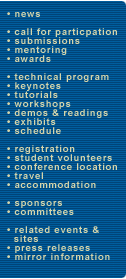 |
 |
Reducing Prompt Leaks: Sanitization and Output Controls
If you’re working with large language models, you already know how critical it is to prevent sensitive information from slipping through the cracks. By focusing on both input sanitization and output controls, you can build stronger barriers against prompt leaks and injection attacks. But simply setting up basic filters isn’t enough—the threats keep evolving, and you need strategies that keep up. So, where should you start strengthening your LLM workflows?
Understanding the Mechanics of Prompt Leaks
When large language models (LLMs) process inputs, they can be susceptible to prompt leaks, which occur when sensitive information inadvertently appears in the output. This vulnerability arises because LLMs treat input as a continuous stream, complicating the differentiation between trusted commands and potentially harmful ones.
Malicious prompts can utilize injection techniques to exploit LLM behavior, leading to incidents of prompt leakage that may expose confidential information.
To mitigate these risks, it's essential to implement comprehensive security measures, including input validation to ensure that incoming data meets specific criteria, output filtering to screen the responses generated for sensitive content, and active sanitization to remove any inadvertent leaks.
Additionally, conducting regular fine-tuning and updates to the models can enhance overall security, reducing the likelihood of confidential data leaks and ensuring the reliability of generated responses.
Common Methods of Prompt Injection
Building on the significance of securing large language models against prompt vulnerabilities, it's essential to recognize various methods that adversaries may utilize to exploit these weaknesses.
Common attack techniques include prompt injection, where harmful inputs are designed to influence LLM outputs. Direct Prompt Injection involves the use of damaging instructions embedded within user input, while indirect methods may involve manipulation of external content that impacts the model's behavior.
Attackers also employ encoding techniques, such as Base64 encoding, to bypass input validation and sanitization measures. Additionally, strategies such as jailbreaking and multi-turn interactions can further circumvent output controls, increasing security risks.
A thorough understanding of these methods is crucial for developing effective protective measures and addressing the evolving nature of techniques used in prompt injection exploits.
Threats Posed by Prompt Leaks in LLM Applications
Large language models (LLMs) possess significant capabilities, but prompt leaks can present notable security and privacy issues for organizations utilizing these technologies.
In the context of LLM applications, prompt leaks can result in the exposure of sensitive information, proprietary business data, or unauthorized access to confidential algorithms.
Attackers may leverage unfiltered user inputs, circumventing inadequate prompt management practices, which can lead to data breaches and compromised system integrity.
The likelihood of sensitive prompt leakage rises in the absence of effective sanitization and output filtering, thereby endangering valuable organizational assets.
Security teams encounter increased complexities, particularly in sectors such as finance and healthcare, where the repercussions of prompt leaks can damage reputations and result in substantial regulatory penalties.
Input Sanitization Strategies to Block Attacks
Input sanitization is a critical measure for defending against prompt injection attacks that can jeopardize the security of large language models (LLMs).
It's essential to validate and clean all user inputs to prevent potentially harmful data from being processed by the model. Effective input validation techniques include checks on input length, encoding of special characters, and filtering based on established attack signatures. These methods aim to mitigate threats before they can be exploited.
Security experts advocate for context-aware filtering, which ensures that inputs align with expected parameters, thus minimizing the risk of data breaches and safeguarding sensitive information.
Furthermore, integrating machine learning classifiers into the sanitization process can improve detection capabilities, enabling the system to adapt to emerging threats over time.
Designing Robust Output Controls
While input sanitization is essential for maintaining security protocols, robust output controls are equally important in mitigating the risks of prompt leaks. Implementing stringent filtering mechanisms allows for the examination of generated content to identify sensitive data leaks and potential security vulnerabilities before the information is presented to users.
Techniques such as length checks, pattern detection, and context-aware filtering are effective in identifying outputs that may indicate prompt injection or anomalous behavior.
Furthermore, employing machine learning classifiers can enhance these filtering processes, dynamically identifying and sanitizing content that raises concerns.
It's also critical to regularly update output controls to adapt to emerging threats and attack vectors, ensuring ongoing effectiveness in preventing data leaks. This continuous improvement is vital for maintaining robust security measures in information dissemination.
Role of Monitoring and Human Oversight
As large language models (LLMs) become increasingly integrated into organizational workflows, it's essential to monitor their outputs to identify and address potential prompt leaks promptly. A combination of automated monitoring and human oversight is crucial in establishing an effective safety mechanism. Utilizing tools designed to check LLM interactions for sensitive information is important, alongside implementing anomaly detection systems to identify outputs that deviate from expected patterns or indicate potential data leaks.
Human reviewers play a vital role in this ecosystem by validating flagged content, particularly when the output controls identify patterns that carry a higher risk of leakage.
Building a Resilient Defense Against Future Prompt Leaks
Establishing a resilient defense against prompt leaks in language models requires a systematic and layered approach that addresses potential vulnerabilities.
Effective strategies must involve rigorous input validation and sanitization to prevent unauthorized prompt injections and malicious commands from impacting outputs. Additionally, implementing thorough output validation processes is crucial for identifying and filtering out harmful content before it can be presented to users.
Furthermore, incorporating context-aware filtering mechanisms ensures that generated outputs remain within defined parameters, reducing the risk of data exposure.
It's essential to pair these preventive measures with ongoing monitoring to quickly identify and respond to any suspicious activities.
Regular updates of security protocols and features are also necessary to adapt to emerging risks, thereby maintaining the integrity of sensitive information.
Conclusion
You’ve seen how prompt leaks threaten both your data and LLM-based systems. By rigorously sanitizing inputs and implementing dynamic output controls, you’ll cut off common paths for attacks—making your application safer. Don’t forget that regular updates and close monitoring are crucial to stay ahead of new threats. Combine smart automation with careful human oversight, and you’ll build a resilient shield against future prompt leaks. Stay proactive and your systems will remain strong and secure.